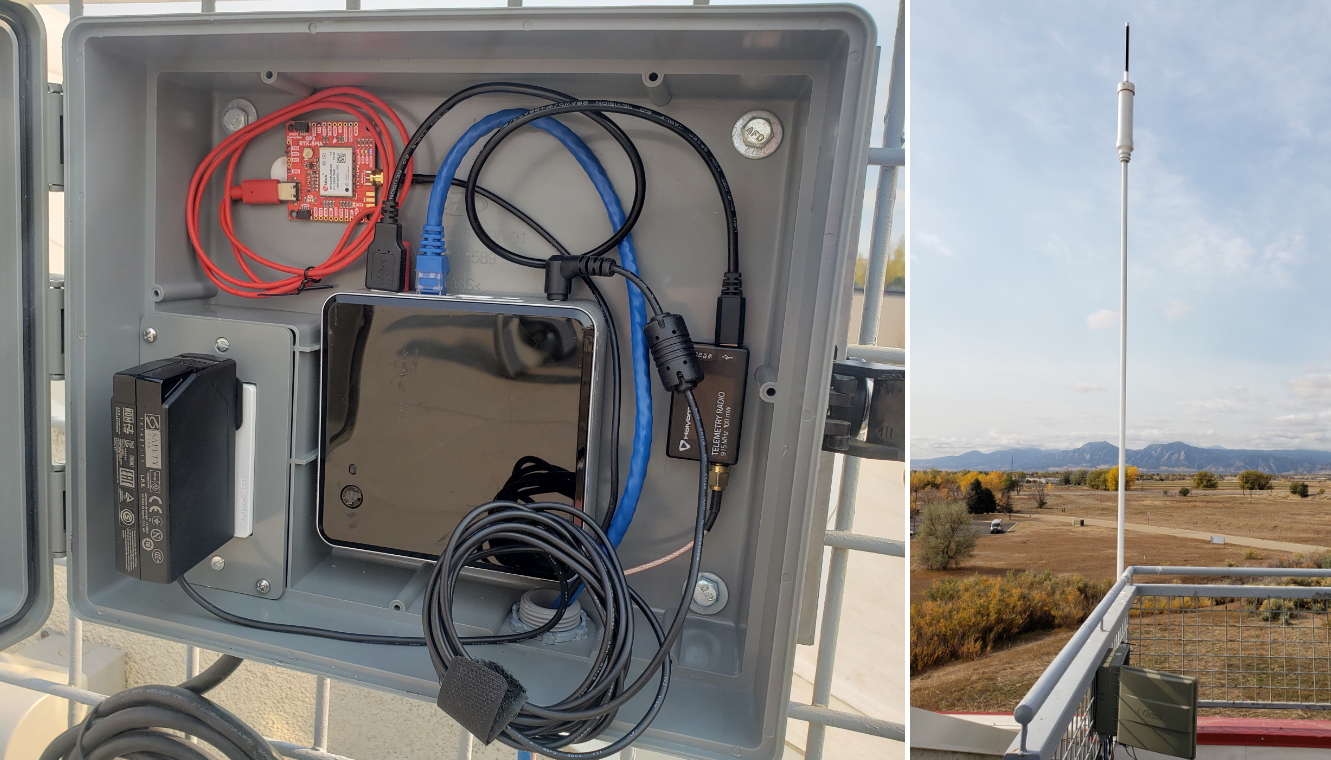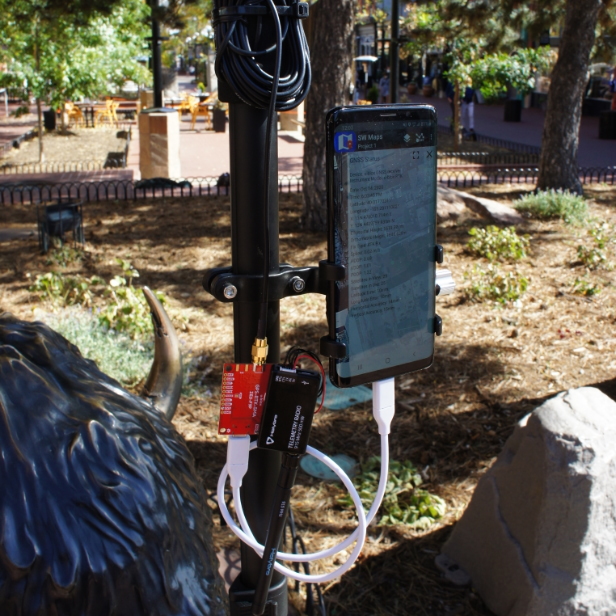Arduino Examples
Now that we have our library and board add-on installed, we can get started experimenting with the breakout board. For the scope of this tutorial, we will highlight two of the examples from the Arduino Library. From there we will be able to build our own custom code to integrate the breakout board into a project.
Example 1: RAWX
This example shows how to configure the NEO-F9P GNSS for L5 band and overriding the health status. The output will indicating the type of signals that the NEO-F9P is receiving. Head to the example in the NEO-F9P folder (located in File Examples > SparkFun u-blox GNSS V3 > NEO-F9P > Example1_RAWX).
If you have not already, select your Board (in this case the SparkFun ESP32 IoT RedBoard), and associated COM port. Upload the code to the board and set the Arduino Serial Monitor to 115200 baud. Give the NEO-F9P a few minutes to get a satellite lock.
The signals available will be output in the Serial Monitor. If everything goes well, you should see some L5 signals (highlighted in red).
Example 1: Get Position Accuracy
Note
Make sure that you are in the correct folder! These examples are in the ZED-F9P folder instead of the NEO-F9P folder.
As a quick test to see if we are getting coordinates and how accurate the values are, we will be using the first example in the ZED-F9P folder (located in File Examples > SparkFun u-blox GNSS V3 > ZED-F9P > Example1_GetPositionAccuracy). The example in this tutorial is technically the second one but we numbered the example based on the one that is within the ZED-F9P folder.
As stated in the note in the previous section and example, you will need to enable the L5 band, override the health status, save the configuration, and power cycle the NEO-F9P. In the setup() function, make sure to include the following three lines after connecting to the NEO-F9P.
//Add the following 3 lines below to enable L5 band and override health status check on the NEO-F9P
myGNSS.setVal8(UBLOX_CFG_SIGNAL_GPS_L5_ENA, 1); // Make sure the GPS L5 band is enabled (needed on the NEO-F9P)
myGNSS.setGPSL5HealthOverride(true); // Mark L5 signals as healthy - store in RAM and BBR
myGNSS.softwareResetGNSSOnly(); // Restart the GNSS to apply the L5 health override
If you have not already, select your Board (in this case the SparkFun ESP32 IoT RedBoard), and associated COM port. Upload the code to the board and set the Arduino Serial Monitor to 115200 baud. Give the NEO-F9P a few minutes to get a satellite lock. The GPS coordinates and the accuracy will be output in the Serial Monitor.
To increase accuracy, you will need to feed correction data from a correction source. Make sure to check the examples and tutorials linked in the next section.
More Examples!
Now that you got it up and running, check out the other examples located in the ZED-F9P folder!
Of course, to get the most out of the NEO-F9P, you will need an RTCM correction source. Depending on your setup, you will probably need a second NEO-F9P for a correction source. The following project tutorials allow you to set up the ZED-F9P as a reference station or rover.



